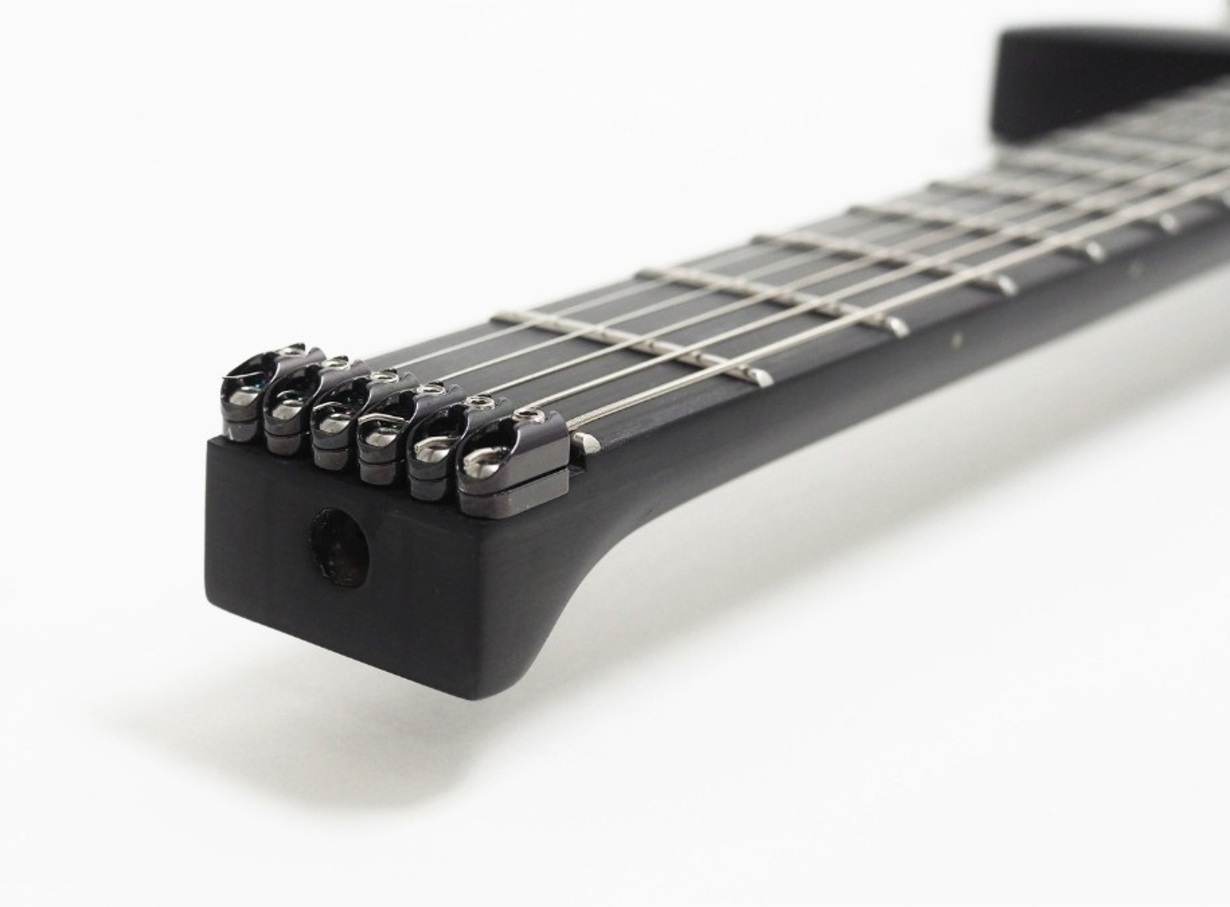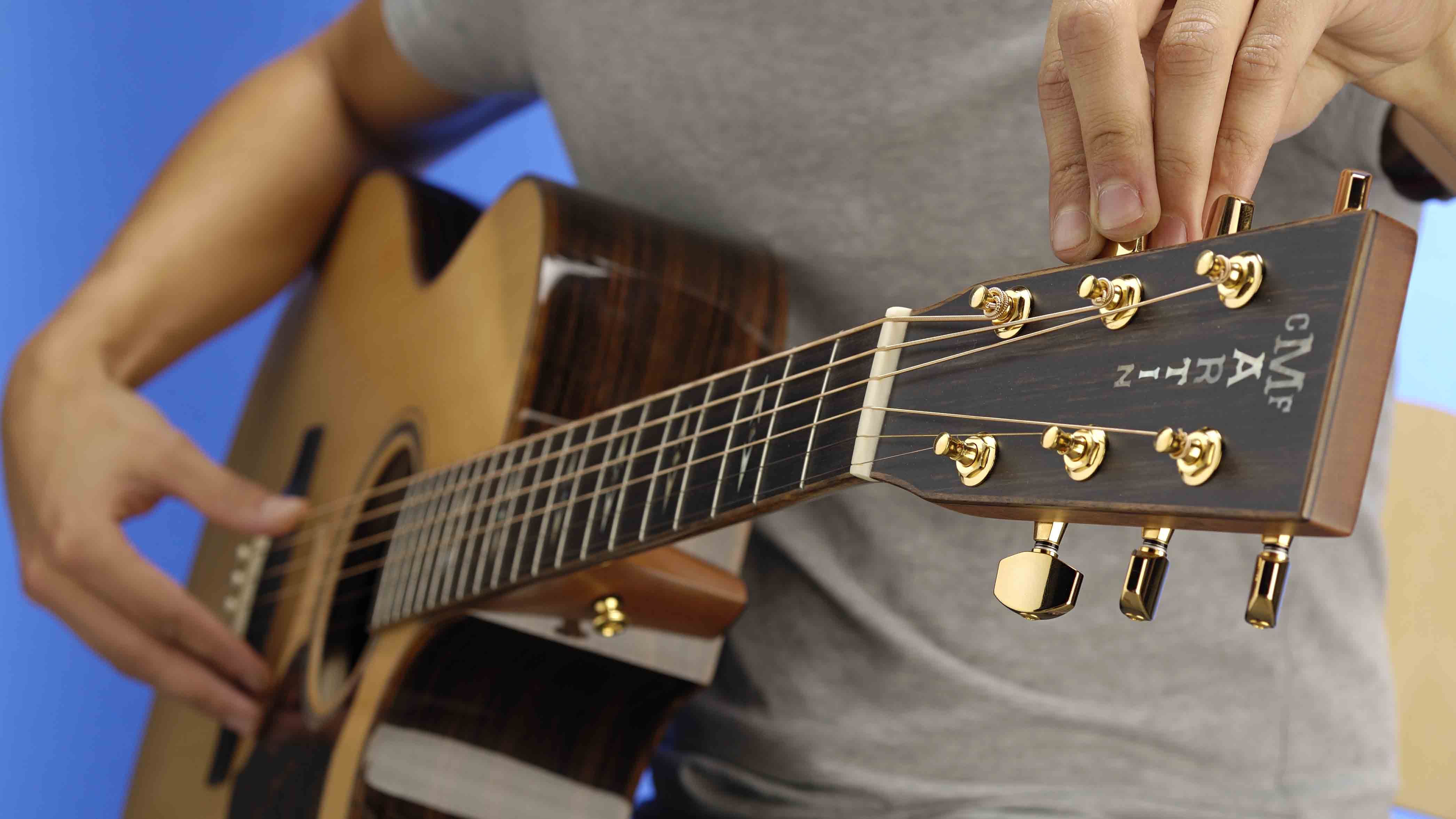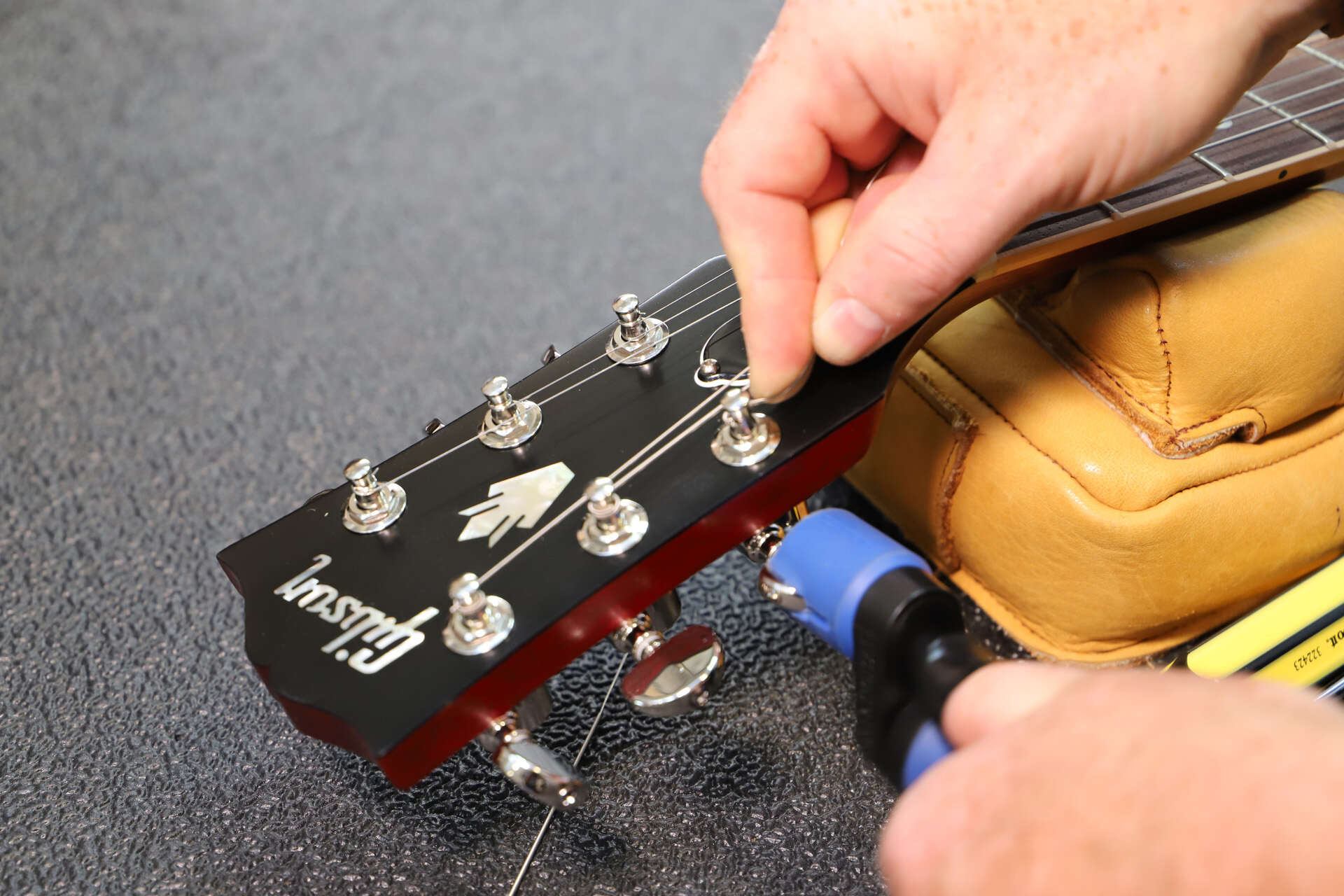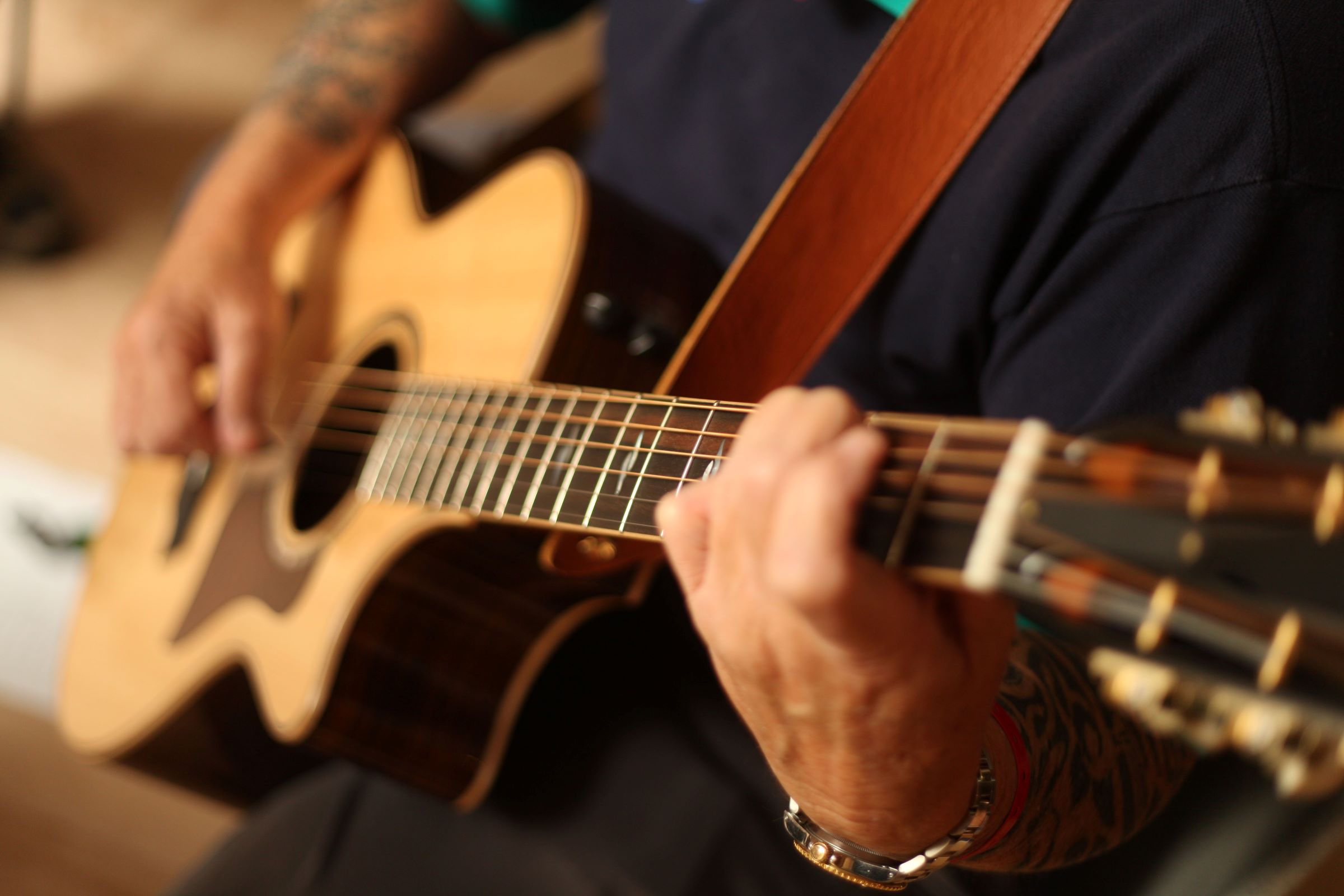Home>Instruments>Bass>How Do You Tune A Bass Guitar


Bass
How Do You Tune A Bass Guitar
Published: November 27, 2023
Learn how to tune a bass guitar with our step-by-step guide. Improve your bass playing skills and sound with proper tuning.
(Many of the links in this article redirect to a specific reviewed product. Your purchase of these products through affiliate links helps to generate commission for AudioLover.com, at no extra cost. Learn more)
Table of Contents
Introduction
When it comes to the world of music, the bass guitar holds a special place. As the backbone of the rhythm section, the bass guitar provides the foundation for a catchy melody and a solid groove. But in order to ensure that your bass guitar sounds its best, it is crucial to have it properly tuned.
Tuning a bass guitar involves adjusting the pitch of each string to the correct frequency, which allows for accurate and harmonious playing. Whether you are a beginner or an experienced bassist, understanding how to tune your instrument is essential for optimum sound quality and a pleasurable playing experience.
In this article, we will delve into the art of bass guitar tuning, exploring both standard and alternate tunings, as well as providing you with the tools and techniques needed to achieve perfect pitch. We will also share some expert tips and tricks to help you fine-tune your bass guitar like a pro.
So, let’s dive in and unlock the secrets of bass guitar tuning!
Understanding Bass Guitar Tuning
Before we delve into the specifics of tuning a bass guitar, let’s first understand how the instrument is traditionally tuned. The standard tuning for a bass guitar is E-A-D-G, starting from the thickest string (lowest pitch) to the thinnest string (highest pitch).
Each of these strings is tuned to a specific frequency, which determines its pitch. The thickest string, E, is typically tuned to 41.20 Hz, followed by A at 55 Hz, D at 73.40 Hz, and G at 98 Hz. Tuning your bass guitar to the correct pitch ensures that each string resonates and harmonizes with the others.
One important concept to understand when it comes to bass guitar tuning is the concept of pitch accuracy. The accuracy of pitch is measured in cents, with one cent being equal to a hundredth of a semitone. When tuning your instrument, you want to aim for as close to perfect pitch as possible, meaning that each string is tuned to the exact frequency intended.
It’s important to note that while standard tuning is the most common, there are various alternate tunings that can be used to create different sounds and styles. These alternate tunings may involve changing the pitches of one or more strings, allowing for unique chord voicings and melodic possibilities.
Now that we have a basic understanding of bass guitar tuning, let’s explore the standard tuning in more detail and also delve into some of the alternate tunings used by bassists around the world.
Standard Bass Guitar Tuning
The standard tuning for a bass guitar is known as E-A-D-G tuning. This means that the thickest string, also known as the low E string, is tuned to E, followed by the A, D, and G strings. This tuning provides a solid foundation for most musical genres and allows for easy navigation of the fretboard.
To tune your bass guitar to standard tuning, you can follow these steps:
- Start by locating the tuning pegs at the headstock of your bass guitar. These pegs are used to adjust the tension and thus the pitch of each string.
- Pluck the low E string (the thickest string) and listen to its pitch. If it sounds too flat or sharp, use the tuning peg for the low E string to adjust the tension. Turn the peg clockwise to increase tension and raise the pitch, or counter-clockwise to decrease tension and lower the pitch.
- Once the low E string is tuned to the correct pitch, use it as a reference to tune the rest of the strings. Press down on the 5th fret of the low E string and pluck the A string. Adjust the tension of the A string’s tuning peg until it matches the pitch of the 5th fret of the low E string.
- Repeat the process for the D and G strings. Press down on the 5th fret of the A string to match the pitch of the D string, and press down on the 5th fret of the D string to match the pitch of the G string.
After tuning all the strings, it is advisable to check the tuning again and make any necessary adjustments. It’s important to listen carefully and ensure each string is in tune, as a well-tuned bass guitar will produce a clear and balanced sound.
Standard tuning allows for easy chord shapes and familiar fingerings, making it the go-to tuning for most bassists. However, don’t be afraid to experiment with alternate tunings to explore different tonal possibilities and create unique sounds.
Alternate Bass Guitar Tunings
While standard E-A-D-G tuning is the most common for bass guitars, there are several alternate tunings that can open up new creative possibilities and unique soundscapes. These alternate tunings involve changing the pitch of one or more strings to create different tonal and harmonic textures.
One popular alternate tuning for bass guitars is Drop D tuning. In this tuning, the low E string is lowered to D, while the rest of the strings remain in standard tuning. Drop D tuning provides a heavier, deeper sound and allows for easy power chord shapes and booming low notes.
Another popular alternate tuning is Dropped C tuning, where both the low E string and the A string are lowered to C. This tuning is commonly used in heavy metal and hard rock genres, as it provides a heavy and aggressive tone.
For those seeking a more unique and experimental sound, the “All-Fourths” tuning is worth exploring. In this tuning, each string is tuned a perfect fourth interval apart. This creates a symmetrical and balanced tuning, allowing for easier chord shapes and intricate melodic patterns.
Other popular alternate bass guitar tunings include Open C, where the strings are tuned to the notes C-G-C-F; Open D, where the strings are tuned to D-A-D-F#; and Half-Step Down, where all the strings are tuned one half-step lower than standard tuning.
Experimenting with alternate tunings can inspire creativity and help you discover new musical ideas. It’s important to note that each tuning may require adjustments to your playing technique, as the fingerings and chord shapes will be different from standard tuning. Take your time to familiarize yourself with the new tuning and explore its unique sonic possibilities.
Remember, there are no rules when it comes to choosing a bass guitar tuning. Feel free to experiment, find what resonates with your musical style, and let your imagination run wild!
Tools and Techniques for Bass Guitar Tuning
When it comes to tuning your bass guitar, there are several tools and techniques you can utilize to achieve accurate and precise tuning. Let’s explore some of the most commonly used tools and techniques:
1. Electronic Tuners: Electronic tuners are a popular choice for bassists as they provide precise and real-time feedback on the pitch of each string. Simply clip the tuner onto the headstock of your bass guitar and pluck each string. The tuner will display the current pitch and indicate whether the string needs to be tuned up or down.
2. Smartphone Apps: There are various smartphone apps available that can effectively tune your bass guitar. These apps utilize the device’s microphone to analyze the pitch of each string and provide visual feedback. Some popular tuning apps include GuitarTuna, Pro Guitar Tuner, and Cleartune.
3. Pitch Pipes: Pitch pipes are small, handheld devices that produce a specific pitch when blown into. They can be used to tune your bass guitar by comparing the pitch of each string with the corresponding note on the pitch pipe.
4. Harmonics: Another technique for tuning a bass guitar involves using harmonics. By lightly touching the string above the 5th, 7th, or 12th fret and plucking it, you can produce a harmonic tone. Compare the pitch of the harmonic with the desired note to tune each string accordingly.
5. Ear Training: Developing your ear is an essential skill for any musician. With practice, you can train your ears to recognize when a string is in tune or needs adjustment. This method takes time and experience but can ultimately lead to a more intuitive and accurate tuning process.
Regardless of the tool or technique you choose, it is important to tune your bass guitar in a quiet environment where you can clearly hear the pitch of each string. Take your time and make small adjustments to achieve the desired pitch.
Remember to regularly check the tuning of your bass guitar, as strings can naturally detune over time due to factors such as temperature and humidity. By keeping your instrument well-tuned, you’ll ensure optimal sound quality and enjoy a harmonious playing experience.
Tips and Tricks for Tuning a Bass Guitar
Tuning a bass guitar may seem like a straightforward task, but there are some tips and tricks that can make the process smoother and more efficient. Here are some valuable tips to help you tune your bass guitar:
1. Stretch Your Strings: New strings often require some stretching to settle in and hold their tune. After installing new strings, gently pull and stretch each string along its length. This helps remove any excess slack and ensures better tuning stability.
2. Use Harmonics for Fine-Tuning: Harmonics can be a useful method for fine-tuning your bass guitar. By comparing the pitch of a harmonic to the pitch of the desired note, you can make small adjustments to achieve precise tuning.
3. Tune in a Silent Environment: Tuning in a quiet environment reduces external noise and allows you to focus on the pitch of each string. Find a calm space free from distractions to ensure an accurate tuning process.
4. Use Reference Notes: You can use reference notes to tune your bass guitar. For example, you may tune the A string to match the pitch of a properly tuned piano or guitar. This method can help you achieve consistent tuning across different instruments.
5. Double-Check Open and Fretted Notes: When tuning, it’s important to check the pitch of both open strings and notes played on different frets. This ensures that your bass guitar is in tune throughout the entire fretboard.
6. Tune by Ear: While electronic tuners and apps are helpful tools, developing your ear for tuning is a valuable skill. Practice matching the pitch of each string to a known reference and rely on your ears to make fine adjustments.
7. Check Intonation: Intonation refers to the accuracy of the pitch at different frets along the guitar neck. After tuning your bass guitar, play a few notes on different frets and ensure that they are in tune. If the notes sound sharp or flat, you may need to adjust the intonation using the bridge saddles.
8. Keep Your Bass Guitar Well-Maintained: Regularly maintaining your bass guitar helps ensure optimal tuning stability. Keep the frets clean, maintain proper string height, and regularly check and tighten the tuning pegs to prevent any slipping.
Remember, tuning is an ongoing process. Even the best-tuned bass guitar can drift out of tune over time, so make it a habit to check and adjust your tuning regularly.
By following these tips and tricks, you’ll be able to achieve accurate tuning and enjoy the full potential of your bass guitar.
Conclusion
Tuning a bass guitar is an essential skill for any bassist, whether you’re a beginner or an experienced musician. By understanding the concept of pitch, familiarizing yourself with standard and alternate tunings, and using the right tools and techniques, you can ensure that your bass guitar is always in tune.
Standard tuning, with the strings tuned to E-A-D-G, provides a solid foundation for most musical genres. However, don’t be afraid to experiment with alternate tunings to explore new sounds and create unique musical expressions.
Whether you choose to use electronic tuners, smartphone apps, harmonics, or your own ears, the key is to take your time and make small adjustments until each string is perfectly pitched. Regularly checking and maintaining your bass guitar’s tuning will enhance your playing experience and ensure a harmonious sound.
Remember, tuning is not a one-time event but an ongoing process. By incorporating the tips and tricks discussed in this article, you can develop a keen ear for pitch and maintain your bass guitar’s tuning with ease.
So, grab your bass guitar, tune it up, and unleash your musical creativity with confidence!











